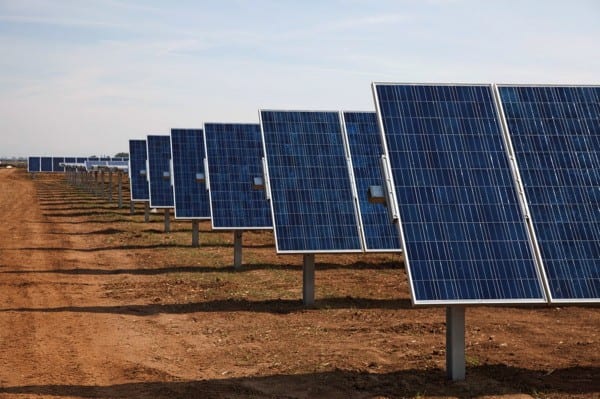
The end is in sight for Australia’s large-scale renewables investment drought, according to Infigen Energy CEO Miles George, but project development will need to be ramped up significantly to meet current RET obligations.
Speaking after the release of Infigen’s interim results presentation, George said the LGC market was now working as intended, with spot and forward prices rising to incentivise the new build required to meet the large-scale renewable energy target.
“On the demand side, we’ve seen a big change in attitude from the obligated parties, including the big three (Australian energy retailers), who just 12 months ago did not want to talk about off-takes and large-scale renewables at all,” George told RenewEconomy in an interview.
“Those parties are now willing to talk off-takes – not the historical 20-year PPAs, but 5 or 10 year deals – and that’s an indication that the market has started to move.
“We think the market is working… concrete isn’t being poured into the ground on many projects yet, but it’s definitely moving.”
Naturally enough, George added, this shift has created “a bit of a supply-demand imbalance in the opposite direction to what it’s been in the past.”
“Obviously what we’re trying to fill is the gap between existing supply and the required build to meet the RET.” – a gap is illustrated nicely in the below chart from Infigen’s presentation.

This required build is roughly 1000MW per annum, but – as George points out – because it takes two years to build a wind farm, “we’re already beyond trying to meet the first 1000MW in 2016, so we need to get 2000MW up for 2017,” he said.
According to George, this capacity gap will eventually be filled by a mix of renewables technologies, but with long-term wind energy costs down around $80/MWh, wind farms are likely to dominate, while large-scale solar – George puts long-term big solar costs at around $120/MWh, which is in stark contrast to Origin Energy chief Grant King, who says they’re equal to wind at around $80/MWh – would probably make up around 20 per cent of the scheme.
“It depends on the rate at which the cost of large-scale solar comes down,” George told RE, but in the current market, he added, mechanisms like ARENA’s 100MW solar tender were still required to bridge the gap of the long-run cost of energy for solar and for wind, he said.
For Infigen’s part, the now purely Australian company has two large-scale solar projects shortlisted in the ARENA tender process – Manildra and Capital Solar – and according to George, is participating in a number of other state and privately run tender processes, underway at the moment.

These ranged from the Queensland government-owned Ergon Energy tender for 150MW, in which Infigen has a wind project shortlisted, to dealings with private sector participants who need to meet their RET obligations.
“All of the main obligated parties are in various ways now looking at how they are going to meet their future obligations once the bulk of their surplus LGCs run out,” said George. “That supply is going to run out fairly quickly.
“Alinta, the Melbourne City Council, Synergy in WA – these are all parties that have started various processes,” he said, “and we are interacting with all of them.”
These would be welcome signs for an industry which, as George put it, narrowly avoided obliteration under the Abbott government; whose policy changes and anti-renewables stance resulted in a three-year investment drought, putting Australia well behind schedule in even its much reduced renewable energy target – which might not have been a target at all, but for the intervention of micro-party players Ricky Muir and Glenn Lazarus.
“The lesson that we have learned, and I think the government has also learned,” said George on Thursday, “is that the most important thing for a program like the RET is to have policy stability.
“The policy instability … over the last three years has resulted in a very big loss of investment. I think the (Turnbull) government recognises fully that the key… is to maintain policy stability. No changes.
“The message I get from government is that they accept the (RET) scheme is now working as intended. And they recognise that policy stability is critical for attracting investors.”
And in a nod to the RepuTex report released on Wednesday this week, George noted that it was equally important that the anti-renewables rhetoric went the same was as the policy instability.
“Legislation for the LRET was passed in June 2015. That could have been the signal of improved policy stability. But we – particularly those of us in the wind industry – all remember that after that time, both the former treasurer and the former PM made some very negative comments about the scheme,” he said, pointing in particular to Tony Abbott’s extraordinary June 2015 assurance that the newly legislated RET was designed to deliver a “capital R” Reduction in the growth rate of the wind energy sector “as much as the current Senate would allow”.
“Prime minister Turnbull is much more attuned to what business needs,” George told RE. “And that’s not just about what’s written in legislation but also about what ministers say.”










